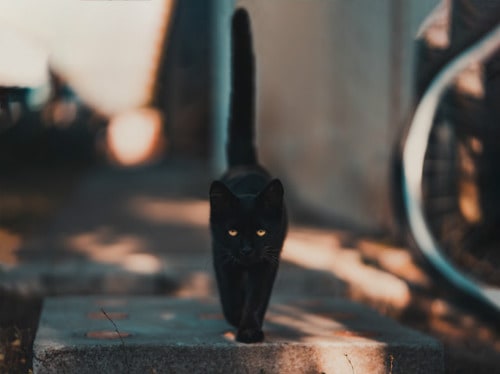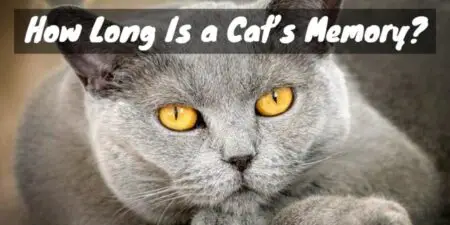It’s every pet owner’s worst nightmare: a door or window gets left open and your cat slips out. Entranced by the myriad scents and sounds of the outdoors, it wanders off into unknown territory, and before long it’s miles from home. Dinnertime rolls around and your cat is nowhere to be found.
A lost cat may seem like a lost cause, but as many owners of adventurous cats can attest, they’re rarely as lost as we think. With advanced navigational abilities, ultra perceptive senses and crystal clear memories, cats are able to find their footing even in unfamiliar areas. Making the return journey is often just a matter of time – eventually the great unknown loses its novelty and the cat remembers that there’s no place like home.
How are cats able to navigate so precisely without any external tools? What compels them to go on these multi-mile adventures, and how do they return to familiar ground when they’re done exploring? Let’s learn more about feline homing instincts and discover how cats find their way home.
Animal Adventurers
We still don’t know exactly what makes cats such expert explorers, but we do know that they’re not alone. In fact, when it comes to navigational abilities, humans seem like amateurs compared to the rest of the animal kingdom.

Mammals, birds, insects and fish all display incredible fears of positioning and navigation. Salmon travel the seas for years before returning to the same rivers they were born in to spawn. Monarch butterflies take several generations to complete one migration, but they, too, are miraculously able to return to the same breeding grounds year after year.
Homing pigeons are so adept at navigating that they were named for their skill. Even if a homing pigeon is sedated and shipped hundreds of miles away from its roost, as soon as it awakens it will begin flying home. They are such precise navigators that they were used as messengers before the invention of telecommunications; tie a note to the foot of a pigeon and it will be delivered to the bird’s home address in a matter of days or even hours.
Cats don’t usually travel such great distances: they don’t migrate and enjoy having their own definitive territories, plus walking is a lot slower than flying or swimming. But they’re experts at traversing the areas they do venture into, and if they need to they’re capable of successfully journeying across hundreds of miles. Exactly how they do this is stil unknown, but scientists have several theories.
Scent Away
Everyone knows that cats have excellent vision and hearing, but less commonly known is that they also have incredible senses of smell. A cat’s nose is over 40 times more powerful than a human’s, containing up to 200 million scent receptors. Plus cats have a special organ in their mouths that picks up scents – it’s believed that when cats stick their tongues out, they’re not just being silly, they’re smelling things with their mouths!
Because cats smell so well, they use scents for just about everything. Special glands on the head, paws and tail release pheromones when rubbed. These pheromones are usually imperceptible to humans, but to cats they’re like business cards, unique to each individual and containing vital information such as the cat’s age, health, sex, weight and ability to mate.
When your cat rubs on things, it’s probably because it feels good but also because doing so deposits its scent. This signals to other cats that the object belongs to it, but it also comforts the cat – because it’s able to recognize its familiar scent, it can easily locate the object in the future simply by sniffing it out.
By leaving its scent all over its territory, your cat is able to locate its home by smell over short distances. Male cats who haven’t been neutered will spray urine laden with pheromones around their territories; this scent is so strong humans can smell it from afar, so for cats it’s an extremely amplified scent signal. If your cat is familiar with the scents left by other cats around the neighborhood, it can use those to map out its surroundings: “Hey, that smells like the gray tabby from down the street – I must be getting close to home!”
But what about when your cat has left the neighborhood and ventured for miles outside its territory? When even the most powerful cat nose can’t pick up the familiar scent of home, some other, more surprising navigational techniques come into play.
A Landmark Occurrence

Humans rely on landmarks for much of our navigation. If we don’t have a map of some kind or anyone knowledgeable to guide us, we find our way by looking around and trying to recognize something. Once we find a familiar building, tree or street sign, we can extrapolate our location and start to get our bearings.
Cats use landmarks to navigate as well, though their extremely high levels of spatial intelligence add a new dimension to this ability. You’ve probably observed firsthand how precisely your cat can negotiate fairly complex courses, such as jumping from the floor to the counter to the cabinet to the top of the fridge, all without missing a beat or disturbing any of its surroundings. Cats are experts at moving and at remembering how to move based on their bodies’ positions relative to various objects, including landmarks.
The paths our cats take through the neighborhood can seem impossibly intricate, and yet they follow them the same way every time, weaving through the branches of that specific bush and jumping between those particular fence posts. They may not be able to read street signs or comprehend the difference between a church and a schoolhouse, but they have their own sets of landmarks that guide them home, thanks in part to their spectacular spatial awareness.
The Cosmic Compass
Early humans navigated by using the sky as their guide. Even today, we frequently rely on the sky to orient ourselves – the sun always rises in the east and sets in the west, so if we know what time it is, we can easily locate north based on the sun’s location. At night it’s a bit trickier, especially in areas with lots of light pollution, but constellations and the aptly-named North Star can point us in the right direction.
Animals also use the sky to find their way. Scarab beetles rely on the Milky Way to orient themselves; if the sky is obscured by clouds, they find themselves hopelessly lost. Migrating seabirds employ the sky in this way as well, rarely straying off course no matter the weather… except when it’s overcast, in which case they veer off track or even fly in circles.
Cats may navigate with the cosmos as well, though we can’t say for sure. Certainly their excellent night vision would be the perfect tool for this type of navigation, allowing them to easily make out even the dimmest stars in the sky. And it may help explain why they tend to pick the dead of night to venture out on their epic journeys: that’s when their handy stellar map is spread out across the sky.
Magnetic Attraction

Earth is covered in magnetic fields – invisible forces that repel or attract each other based on whether they are positively or negatively charged. Magnetic fields originate deep down in the planet’s core and radiate out to the surface, where they’re influenced by the tides and by other magnetic forces from outer space. Every location on the planet has its own unique magnetic signature based on the strength of the field at that given point in time and space.
At a certain location, the magnetic field points directly down in a vertical line; this point is the North Magnetic Pole towards which compasses always point. The draw of the magnetism at the pole is so great that it always attracts the magnetic point of the needle, no matter where on Earth the compass is. We humans may need a special tool to detect this, but many animals are able to find magnetic north using only their minds and bodies, and cats may be among them.
Some magnetic compounds, such as magnetite and maghemite (both oxides of iron, an essential mineral found in food, particularly the meats that comprise the vast majority of feline diets) are present in high concentrations in certain animals, including homing pigeons. These compounds are thought to be connected to the central nervous system, which utilizes them to create a sixth sense: magnetoreception.
The magnetic compounds are drawn towards magnetic north, but they can also detect information about the strength of the field in any direction. Once an animal knows the magnetic signature of a specific location, it can navigate towards that point by following the magnetic force lines that correspond to it. Magnetoreception isn’t just a compass, it’s a full GPS system.
It’s unknown if cats possess these high concentrations of magnetic compounds, but if they do, it could help explain why they are such adept navigators. When they want to remember a location in the future, they record its magnetic signature in addition to its appearance, scent and sound. And when it’s time to return to that spot, all they have to do is follow the field: they quite literally have an innate sense of direction.
Microscopic Maps
It’s possible that navigation happens on a subatomic level, namely between electrons. Bell’s Theorem suggests that every electron is paired up with another electron, and they spin in opposite directions from one another. If one electron’s spin is altered, the other electron immediately adjusts its spin to correspond; this happens even if the electrons are separated from each other, and even holds true when one electron is taken into space and one remains on Earth!
Some scientists wonder if this incredible, unstoppable bond could play a role in a cat’s ability to return to its home from a great distance. Perhaps some of the electrons in a cat’s body bond with electrons from its preferred environment, and continue to sync up with each other regardless of where the cat happens to be. The bond could serve as a guiding system, with the electrons mirroring each other and drawing the cat back towards the ones that were left behind.
This is still an early stage hypothesis, and much research is still needed on electrons themselves, let alone how they might impact a cat’s cognition. But even the possibility of this theory being true speaks volumes to the strength of the bond a cat forms with its home and the people who live there – even if the bond doesn’t hold true down to the subatomic level, it’s so strong that not even hundreds of miles can break it.
Location Not Found: When Cats Can’t Make It Home

Although it’s a general truth that cats are excellent navigators, it’s not the case with every individual cat. Some cats have trouble just finding their way around the house, let alone navigating the outside world. It’s normal for there to be some individual variation within any trait, but some cats are more likely than others to be good navigators.
Most vets and behaviorists recommend keeping cats indoors. Not only do outdoor cats pose a threat to native species of birds, small mammals and other animals, they’re also at a much greater risk of illness and injury than their indoor counterparts. From cars to birds of prey to other cats, the dangers a cat faces outside are plentiful and always present, resulting in an average lifespan that’s nearly half of an indoor cat’s.
Being outdoors does seem to have one benefit for cats, and that’s navigational abilities. Outdoor cats tend to be much better at finding their way home, thanks to their high levels of experience doing just that. An outdoor cat is an expert at getting home because it has to be; an indoor cat that gets lost will have no prior knowledge of how to return to its territory – or of how to avoid the dangers that await it on the way.
Feral cats in particular tend to have exceptional homing skills out of necessity. They must be experts at traversing their territories in order to find food and shelter, and any cat that can’t do so won’t be around long enough to breed. Thus, breeding tends to take place between the most skilled pathfinders, who then pass on their talents and knowledge to the next generation.
"In ancient times cats were worshipped as gods; they have not forgotten this."
-- Terry Pratchett





